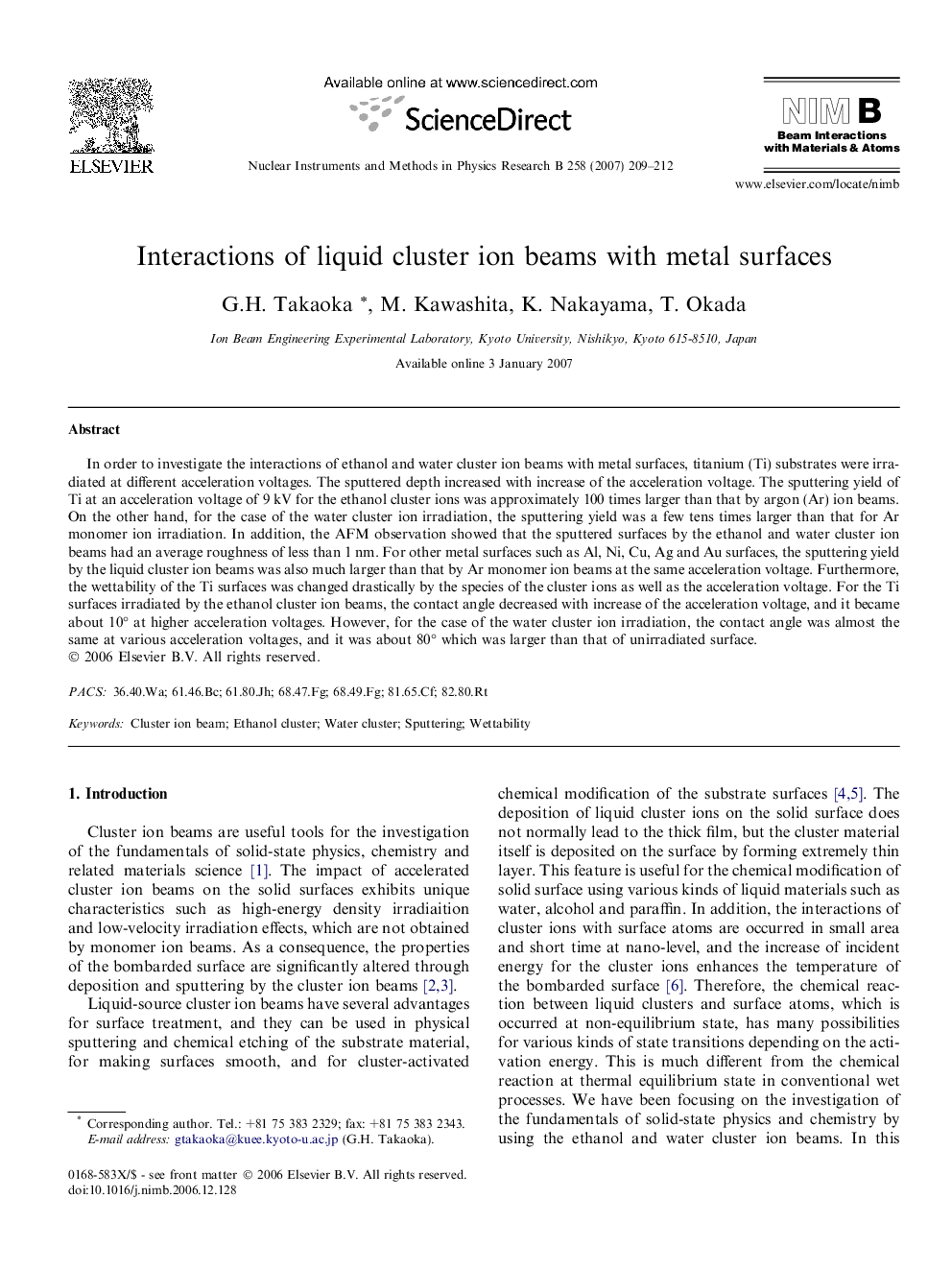| Article ID | Journal | Published Year | Pages | File Type |
|---|---|---|---|---|
| 1687861 | Nuclear Instruments and Methods in Physics Research Section B: Beam Interactions with Materials and Atoms | 2007 | 4 Pages |
In order to investigate the interactions of ethanol and water cluster ion beams with metal surfaces, titanium (Ti) substrates were irradiated at different acceleration voltages. The sputtered depth increased with increase of the acceleration voltage. The sputtering yield of Ti at an acceleration voltage of 9 kV for the ethanol cluster ions was approximately 100 times larger than that by argon (Ar) ion beams. On the other hand, for the case of the water cluster ion irradiation, the sputtering yield was a few tens times larger than that for Ar monomer ion irradiation. In addition, the AFM observation showed that the sputtered surfaces by the ethanol and water cluster ion beams had an average roughness of less than 1 nm. For other metal surfaces such as Al, Ni, Cu, Ag and Au surfaces, the sputtering yield by the liquid cluster ion beams was also much larger than that by Ar monomer ion beams at the same acceleration voltage. Furthermore, the wettability of the Ti surfaces was changed drastically by the species of the cluster ions as well as the acceleration voltage. For the Ti surfaces irradiated by the ethanol cluster ion beams, the contact angle decreased with increase of the acceleration voltage, and it became about 10° at higher acceleration voltages. However, for the case of the water cluster ion irradiation, the contact angle was almost the same at various acceleration voltages, and it was about 80° which was larger than that of unirradiated surface.
